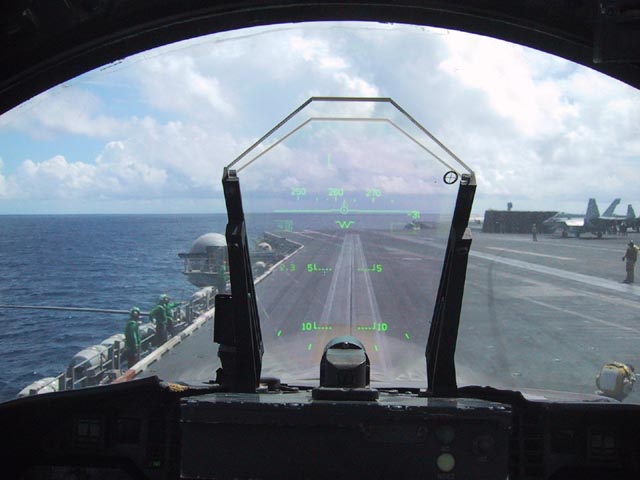|
I-suit
The I-Suit is a spacesuit model constructed by ILC Dover. The suit began as an EVA mobility demonstrator, developed to meet a contract awarded by NASA to ILC in 1997 for an all-soft suit. The I-Suit is designed for multiple roles, including planetary excursion and microgravity EVA. The first generation I-Suit is configured to work with the existing Space Shuttle EMU helmet assembly and wrist bearing/disconnect, and incorporates a 2-bearing hip, hard waist entry, and walking boots. The suit meets requirements imposed by NASA for pressure, structural loads, joint mobility (torque and range of motion), and resizing capability. Improvements over EMU The I-Suit incorporates improvements in materials and manufacturing techniques which make it both lighter and more mobile than the EMU. While the EMU is solely intended for the microgravity environment, where weight is not an issue, the I-Suit's planetary role makes weight a critical factor. By replacing the EMU's fiberglass Hard Up ... [...More Info...] [...Related Items...] OR: [Wikipedia] [Google] [Baidu] |
Spacesuit
A space suit or spacesuit is a garment worn to keep a human alive in the harsh environment of outer space, vacuum and temperature extremes. Space suits are often worn inside spacecraft as a safety precaution in case of loss of cabin pressure, and are necessary for extravehicular activity (EVA), work done outside spacecraft. Space suits have been worn for such work in Earth orbit, on the surface of the Moon, and en route back to Earth from the Moon. Modern space suits augment the basic pressure garment with a complex system of equipment and environmental systems designed to keep the wearer comfortable, and to minimize the effort required to bend the limbs, resisting a soft pressure garment's natural tendency to stiffen against the vacuum. A self-contained oxygen supply and environmental control system is frequently employed to allow complete freedom of movement, independent of the spacecraft. Three types of space suits exist for different purposes: IVA (intravehicular activity) ... [...More Info...] [...Related Items...] OR: [Wikipedia] [Google] [Baidu] |
Mark III (space Suit)
The Mark III or MK III (H-1) is a NASA space suit technology demonstrator built by ILC Dover. While heavier than other suits (at , with a Primary Life Support System backpack), the Mark III is more mobile, and is designed for a relatively high operating pressure. The Mark III is a rear-entry suit, unlike the EMU currently in use, which is a waist-entry suit. The suit incorporates a mix of hard and soft suit components, including hard upper torso, hard lower torso and hip elements made of graphite/epoxy composite, bearings at the shoulder, upper arm, hip, waist, and ankle, and soft fabric joints at the elbow, knee, and ankle. The Mark III was originally designed to an operating pressure, which would make the Mark III a "zero-prebreathe" suit. For a vehicle with a one atmosphere, mixed-gas environment, such as that on the International Space Station, the suit could be donned and ready for an EVA within the normal donning and checkout period without risk of the bends, which ... [...More Info...] [...Related Items...] OR: [Wikipedia] [Google] [Baidu] |
Desert Research And Technology Studies
NASA's Desert Research and Technology Studies (Desert RATS or D-RATS) is a group of teams which perform an annual series of field trials seeking to demonstrate and test candidate technologies and systems for human exploration of the surface of the Moon, Mars, or other rocky bodies. Desert RATS began in 1997, reviving Apollo-style lunar exploration training from decades earlier. The field season takes place for around two weeks each year, usually in September, in planned locations surrounding Flagstaff, Arizona. Some tests have also been conducted near Meteor Crater. These activities are designed to exercise prototype planetary surface hardware and representative mission scenario operations in relatively harsh climatic conditions where long distance, multi-day traversing activities are achievable. Participants The participants in Desert RATS vary from year to year. Past participants have included researchers from various NASA centers, including Johnson Space Center, Kennedy Sp ... [...More Info...] [...Related Items...] OR: [Wikipedia] [Google] [Baidu] |
ILC Dover
ILC Dover, LP is a special engineering development and manufacturing company, globally headquartered in Newark, Delaware. ILC Dover specializes in the use of high-performance flexible materials, serving the aerospace, personal protection, and pharmaceutical industries. Best known for making space suits for NASA, ILC Dover outfitted every United States astronaut in the Apollo program, including the twelve that walked on the moon. ILC also designed and manufactured the Space Suit Assembly portion of the Extravehicular Mobility Unit (EMU), worn by astronauts during performance of extra-vehicular activity (EVA) on Space Shuttle missions and on the International Space Station. Other ILC Dover products include the airbag landing devices for Mars Pathfinder and Mars Exploration Rover (MER) missions; lighter-than-air vehicles, including airships, aerostats, and zeppelins; chemical, biological, radiological, and nuclear (CBRN) masks and hood systems; and flexible powder-co ... [...More Info...] [...Related Items...] OR: [Wikipedia] [Google] [Baidu] |
NASA
The National Aeronautics and Space Administration (NASA ) is an independent agency of the US federal government responsible for the civil space program, aeronautics research, and space research. NASA was established in 1958, succeeding the National Advisory Committee for Aeronautics (NACA), to give the U.S. space development effort a distinctly civilian orientation, emphasizing peaceful applications in space science. NASA has since led most American space exploration, including Project Mercury, Project Gemini, the 1968-1972 Apollo Moon landing missions, the Skylab space station, and the Space Shuttle. NASA supports the International Space Station and oversees the development of the Orion spacecraft and the Space Launch System for the crewed lunar Artemis program, Commercial Crew spacecraft, and the planned Lunar Gateway space station. The agency is also responsible for the Launch Services Program, which provides oversight of launch operations and countdown m ... [...More Info...] [...Related Items...] OR: [Wikipedia] [Google] [Baidu] |
Bearing (mechanical)
A bearing is a machine element that constrains relative motion to only the desired motion, and reduces friction between moving parts. The design of the bearing may, for example, provide for free linear movement of the moving part or for free rotation around a fixed axis; or, it may ''prevent'' a motion by controlling the vectors of normal forces that bear on the moving parts. Most bearings facilitate the desired motion by minimizing friction. Bearings are classified broadly according to the type of operation, the motions allowed, or to the directions of the loads (forces) applied to the parts. Rotary bearings hold rotating components such as shafts or axles within mechanical systems, and transfer axial and radial loads from the source of the load to the structure supporting it. The simplest form of bearing, the '' plain bearing'', consists of a shaft rotating in a hole. Lubrication is used to reduce friction. In the ''ball bearing'' and ''roller bearing'', to reduce sli ... [...More Info...] [...Related Items...] OR: [Wikipedia] [Google] [Baidu] |
Speech Recognition
Speech recognition is an interdisciplinary subfield of computer science and computational linguistics that develops methodologies and technologies that enable the recognition and translation of spoken language into text by computers with the main benefit of searchability. It is also known as automatic speech recognition (ASR), computer speech recognition or speech to text (STT). It incorporates knowledge and research in the computer science, linguistics and computer engineering fields. The reverse process is speech synthesis. Some speech recognition systems require "training" (also called "enrollment") where an individual speaker reads text or isolated vocabulary into the system. The system analyzes the person's specific voice and uses it to fine-tune the recognition of that person's speech, resulting in increased accuracy. Systems that do not use training are called "speaker-independent" systems. Systems that use training are called "speaker dependent". Speech recognition ap ... [...More Info...] [...Related Items...] OR: [Wikipedia] [Google] [Baidu] |
Global Positioning System
The Global Positioning System (GPS), originally Navstar GPS, is a satellite-based radionavigation system owned by the United States government and operated by the United States Space Force. It is one of the global navigation satellite systems (GNSS) that provides geolocation and time information to a GPS receiver anywhere on or near the Earth where there is an unobstructed line of sight to four or more GPS satellites. It does not require the user to transmit any data, and operates independently of any telephonic or Internet reception, though these technologies can enhance the usefulness of the GPS positioning information. It provides critical positioning capabilities to military, civil, and commercial users around the world. Although the United States government created, controls and maintains the GPS system, it is freely accessible to anyone with a GPS receiver. The GPS project was started by the U.S. Department of Defense in 1973. The first prototype spacecraft wa ... [...More Info...] [...Related Items...] OR: [Wikipedia] [Google] [Baidu] |
Head-Up Display
A head-up display, or heads-up display, also known as a HUD (), is any transparent display that presents data without requiring users to look away from their usual viewpoints. The origin of the name stems from a pilot being able to view information with the head positioned "up" and looking forward, instead of angled down looking at lower instruments. A HUD also has the advantage that the pilot's eyes do not need to refocus to view the outside after looking at the optically nearer instruments. Although they were initially developed for military aviation, HUDs are now used in commercial aircraft, automobiles, and other (mostly professional) applications. Head-up displays were a precursor technology to augmented reality (AR), incorporating a subset of the features needed for the full AR experience, but lacking the necessary registration and tracking between the virtual content and the user's real-world environment. Overview A typical HUD contains three primary components: a ... [...More Info...] [...Related Items...] OR: [Wikipedia] [Google] [Baidu] |
Dyneema
Ultra-high-molecular-weight polyethylene (UHMWPE, UHMW) is a subset of the thermoplastic polyethylene. Also known as high-modulus polyethylene, (HMPE), it has extremely long chains, with a molecular mass usually between 3.5 and 7.5 million amu. The longer chain serves to transfer load more effectively to the polymer backbone by strengthening intermolecular interactions. This results in a very tough material, with the highest impact strength of any thermoplastic presently made. UHMWPE is odorless, tasteless, and nontoxic. It embodies all the characteristics of high-density polyethylene (HDPE) with the added traits of being resistant to concentrated acids and alkalis, as well as numerous organic solvents. It is highly resistant to corrosive chemicals except oxidizing acids; has extremely low moisture absorption and a very low coefficient of friction; is self-lubricating (see boundary lubrication); and is highly resistant to abrasion, in some forms being 15 times more resistant t ... [...More Info...] [...Related Items...] OR: [Wikipedia] [Google] [Baidu] |
Vectran
Vectran is a manufactured fiber, spun from a liquid-crystal polymer (LCP) created by Celanese Corporation and now manufactured by Kuraray. Chemically it is an aromatic polyester produced by the polycondensation of 4-hydroxybenzoic acid and 6-hydroxynaphthalene-2-carboxylic acid. Properties Advantages Vectran's golden fibers are noted for their thermal stability at high temperatures, high strength and modulus, low creep, and good chemical stability. They are moisture-resistant and generally stable in hostile environments. Polyester coating is often used around a Vectran core; polyurethane coating can improve abrasion resistance and act as a water barrier. Vectran has a melting point of 330 °C, with progressive strength loss from 220 °C. Disadvantages Although the tensile strength is similar to Kevlar, Vectran still tends to experience tensile fractures when exposed to significant stress. The wispy, hair-like fibers tend to fray, to easily acquire dirt, and ... [...More Info...] [...Related Items...] OR: [Wikipedia] [Google] [Baidu] |





